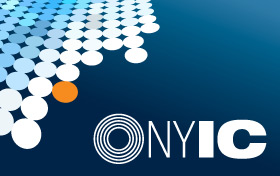|
The following frequently asked questions (FAQs) provide further information about the Federal Reserve’s $1.25 trillion program to purchase agency mortgage-backed securities (agency MBS). The MBS program completed its purchases on March 31, 2010, but will continue to settle transactions over the coming months. In connection with this activity, the Federal Reserve continues to use dollar roll transactions to facilitate an orderly settlement of the program’s purchases. This agency MBS program is managed by the Federal Reserve Bank of New York (New York Fed or Desk) at the direction of the Federal Open Market Committee (FOMC). The New York Fed will continue to work with two investment managers to support the implementation of the program. Effective April 22, 2010
What was the policy objective of the Federal Reserve's program to purchase agency mortgage-backed securities?
The goal of the program was to provide support to mortgage and housing markets and to foster improved conditions in financial markets more generally. What was the volume of MBS purchased?
The FOMC directed the Desk to purchase $1.25 trillion of agency MBS. Actual purchases by the program effectively reached this target. The purchase activity began on January 5, 2009 and continued through March 31, 2010. How were MBS purchases conducted?
MBS were purchased in the secondary market on a daily basis, with the primary dealers as counterparties. Many of these transactions were executed through external investment managers but, as described in more detail in the next paragraph, trading operations were progressively brought in-house by the Desk during the program. Why was it necessary for the Federal Reserve to transact in the agency MBS market via external investment managers?
The operational and financial characteristics of MBS purchases are complex and require specialized technology and expertise to transact. The Federal Reserve chose external investment managers as a means of implementing the MBS program quickly and efficiently while at the same time minimizing operational and financial risks. Because of the size and complexity of the agency MBS program, a competitive request for proposal (RFP) process was employed to select four investment managers and a custodian. The selection criteria were based on the institutions' operational capacity, size, overall experience in the MBS market and a competitive fee structure. The program custodian is J.P. Morgan.
As of August 2009, the Federal Reserve streamlined the set of external investment managers, reducing the number of investment managers from four to two. The New York Fed retained Wellington Management Company, LLP for trading, settlement and as a secondary provider of risk and analytics support; and BlackRock Inc. as the primary provider of risk and analytics support. Beginning on March 2, 2010, the New York Fed began to use internal staff to execute MBS purchases. Subsequently, the Desk alternated trading days with Wellington before assuming full trading responsibilities by program end. Dollar roll transactions since March 31, 2010 have been executed exclusively by the Desk. For the settlement of both legacy purchase and new dollar roll transactions, the New York Fed continues to leverage the middle office settlement support of Wellington.
Why does the Federal Reserve continue to transact in agency MBS dollar rolls following the completion of program purchases?
The Federal Reserve uses agency MBS dollar rolls as a supplemental tool to address temporary imbalances in market supply and demand. A dollar roll is a transaction generally involving the purchase or sale of agency MBS for delivery in the current month, with the simultaneous agreement to resell or repurchase substantially similar (although not necessarily the same) securities on a specified future date. As noted in the January 2010 FOMC meeting minutes, the Federal Reserve continues to use dollar roll transactions beyond March 31 to facilitate an orderly settlement of the agency MBS program’s remaining forward purchase commitments. As of April 2010, the program has forward purchases scheduled to settle through June 2010, and it is conceivable that additional dollar roll activity may extend this settlement period if deemed necessary to facilitate orderly program settlement. With whom does the Federal Reserve transact agency MBS dollar rolls?
The New York Fed transacts agency MBS dollar rolls only with primary dealers who are eligible to transact directly with it.
How are Federal Reserve’s agency MBS holdings reported?
Balance sheet items related to the agency MBS purchase program are reported after settlement occurs on the H.4.1. statistical release titled "Factors Affecting Reserve Balances of Depository Institutions and Condition Statement of Federal Reserve Banks." Securities acquired in dollar roll transactions are also included with other holdings of agency MBS. Trade settlements may occur well after trade execution due to agency MBS settlement conventions. This report also includes information on total outstanding commitments to buy and sell MBS in a supplemental table. In addition, the New York Fed publishes the most recent weekly SOMA agency MBS dollar roll transaction activity in more detail on its external website on a weekly basis. As of October 1, 2009, consistent with New York Fed's regular practice of publishing detailed data on other SOMA holdings, such as Treasury and agency debt securities, the New York Fed also began publishing on a weekly basis detailed data on all settled SOMA agency MBS holdings. Any change in the composition of these reported holdings over time is a function of paydowns and, as explained in more detail in the next question, the program's dollar roll activity. Why have there been sales from the Federal Reserve's portfolio?
As the Desk conducts dollar rolls, staff simultaneously buys and sells agency MBS securities for different forward settlement dates. To date, all sales for the SOMA have been associated with dollar roll transactions. These transactions have not represented any outright sales of agency MBS from the SOMA. What will be the Federal Reserve’s investment strategy for agency MBS going forward?
The program is currently not reinvesting the proceeds from agency MBS that are prepaid, a strategy that will cause agency MBS holdings to decline over time. Any future decisions about the investment strategy to be employed will be made by the Federal Open Market Committee.
Where should questions regarding the MBS purchase program be directed?
Questions regarding the MBS program should be directed to the New York Fed's Public Affairs department: 212-720-6130. FAQS: February 17, 2010 ›› |










